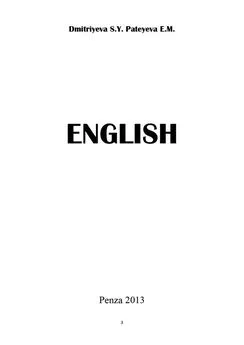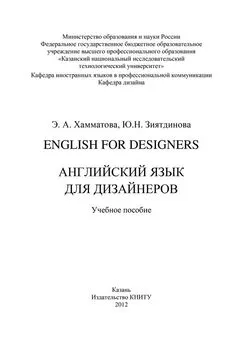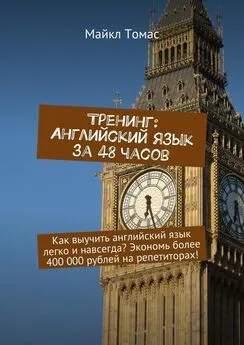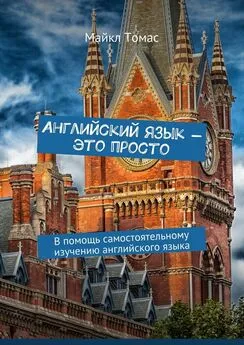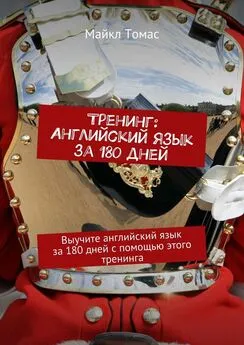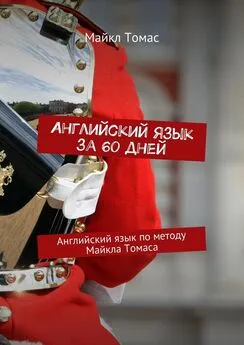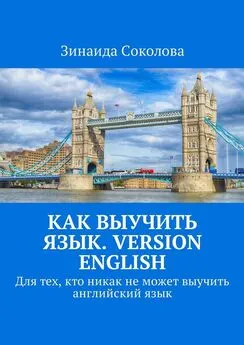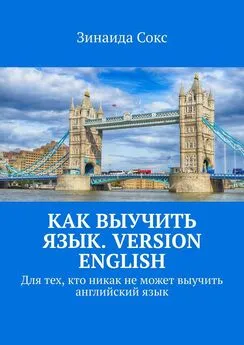Эльмира Патеева - Английский язык
- Название:Английский язык
- Автор:
- Жанр:
- Издательство:Литагент БИБКОМ
- Год:2013
- ISBN:нет данных
- Рейтинг:
- Избранное:Добавить в избранное
-
Отзывы:
-
Ваша оценка:
Эльмира Патеева - Английский язык краткое содержание
Английский язык - читать онлайн бесплатно ознакомительный отрывок
Интервал:
Закладка:
to be regarded – считаться, быть известным как…
gravitational force – сила гравитации
colour – цвет
light – свет
property – свойство
wave – волна
Answer the questions:
1. What were the spheres of Isaac Newton's interests?
2. How is white light produced?
3. What was his theory about light waves?
Ernest Rutherford is called the Newton of atomic physics. He was recognized by his fellow scientists as a man of colossal energy and tireless enthusiasm.
Ernest Rutherford was born in New Zealand. He graduated from New Zealand University and entered Trinity College, Cambridge. In 1919 he was appointed a Professor of experimental physics in the University of Cambridge. E. Rutherford’s early researches concerned electromagnetic waves.
His experiments led him to develop a magnetic detector, which at that time was the best detector of electromagnetic waves. His detector was later used by Marconi, one of the inventors of the radio, in his wellknown investigations. Rutherford’s big triumph began when he turned his attention to radioactivity. His brilliant researches established the existence and nature of radioactive transformations. He also investigated the electrical structure of matter and the nuclear nature of atom. He was one of the founders of the atomic theory of physics and creators of the first atomic model. He stated that the atom consisted of a nucleus around which electrons revolved in orbits.
Wordlist:
recognize – признавать, узнавать
tireless – неустанный
graduate – получать высшее образование
research – исследование
concern – интерес, касаться, интересоваться
detector – детектор, датчик
establish – устанавливать, основывать
matter – вещество, материя
creator – создатель, творец
consist – состоит revolve – вращать, вращаться
Answer the questions:
1. When was Ernest Rutherford born?
2. What was Rutherford’s research concerned with?
3. When did Rutherford’s big triumph begin?
Alessandro Volta was Italian physicist known for the invention of the battery in the 1800s. Volta was born in Como and educated in the public schools there. In 1774 he became professor of physics at the
Royal School in Como, and in the following year he devised the electrophorus, an instrument that produced charges of static electricity. In 1776-77 he applied himself to chemistry, studying atmospheric electricity and conducting experiments such as the ignition of gases by an electric spark in a closed vessel. In 1779 he became professor of physics at the University of Pavia, a chair he occupied for 25 years. By 1800 he had developed the so-called voltaic pile, a forerunner of the electric battery, which produced a steady stream of electricity.
Wordlist
physicist – физик
charge – разряд
ignition – зажигание, воспламенение
voltaic pile – вольтов столб
Answer the questions:
1. What is electrophorus?
2. What experiments in the field of chemistry did he conduct?
3. When did he develop voltaic pile?
4. What did the voltaic pile produce?
Rudolf Diesel was born in Paris, France in 1858. He was a German inventor and mechanical engineer, famous for the invention of the Diesel engine.
Diesel developed a theory that revolutionized the concept of the combustion engine. He envisioned an engine in which air is compressed to such a degree that there is an extreme rise in temperature. When fuel is injected into the piston chamber with this air, the fuel is ignited by the high temperature of the air, exploding it, forcing the piston down. Diesel soon received a patent for his design and began building experimental models of his engine. The first working model ran in 1893 with 26 % efficiency, more than double the efficiency of the steam engine. In 1897 the first diesel engine suitable for practical use operated at a remarkable efficiency of 75 %.
Wordlist
concept – концепция, понятие
to be injected – впрыскиваться
to receive a patent – получить патент
to envision – представлять себе
suitable for practical use – пригодный для практического применения
Answer the questions:
1. When was Rudolf Diesel born?
2. How did he envision an engine?
3. What did he receive a patent for?
4. When did the first engine suitable for practical use appear?
Nicola Teslawas a Serbian-American inventor, electrical engineer, mechanical engineer. physicist. American inventor Nicola Tesla patented an electricity-generating and distribution system that transmitted alternating current (AC). He developed and applied many other important ideas in the fields of electricity and radio.
The Tesla coil, an induction coil he invented, is used in radio technology and operates at every high frequencies.
Tesla worked briefly for the American inventor Thomas Edison (18471931), but they fell out because they disagreed about the best form of electric current to use for large-scale supply.
In the end, Tesla's alternating current system was favored over Edison's direct current (DC) system.
Wordlist
alternating current – переменный ток
current – ток coil – катушка
high frequencies – высокие частоты
to fall out – распадаться
Answer the questions:
1. Where is Nicola Tesla from?
2. What sphere did he work in?
3. What did he develop?
4. Whom did he work with? What was their disagreement?
Alfred Bernard Nobel was Swedish inventor and philanthropist. He was a son of a bankrupt, but became a millionaire; a scientist with a love of literature. He made a large fortune but lived a simple life. He was cheerful in company, and often sad in private.
A lover of mankind, he never had a wife or family to love him, a patriotic son of his native land, he died alone on foreign soil.
He discovered a new explosive, dynamite, to improve the peacetime industries of mining and road building, but saw it used as a weapon of war.
He was born in Stockholm on October 21, 1833 but moved to Russia with his parents in 1842, where his father made a strong position in engineering industry. He made a lot of money for his invention of landmine, but later went bankrupt. Alfred came to Sweden in 1863, and started his own study of explosives in his fathers laboratory.
He had never been to school or University but he studied privately and by the time he was twenty he became a skillful chemist and excellent linguist, speaking Swedish, Russian, German, French and English. Like his father, Alfred Nobel was imaginative and inventive, but he had better luck in business and showed more financial sense.
He was quick to see industrial openings for his scientific inventions and built up over 80 companies in 20 different countries. Indeed greatness lay in his outstanding ability those of a forward-looking industrialist.
But Nobel?s main concern was never with making money or even making scientific discoveries. He was always searching for a meaning to life, and from his youth he had taken a serious interest in literature and philosophy. Perhaps, because he could not find ordinary human love- he never married- he came to care deeply about the whole of mankind. He was always generous to the poor. His greatest wish, however, was to see an and to wars and he spent much time and money working for this cause until his death in Italy in 1896.
His famous will, in which he left to provide prizes for outstanding works in physics, chemistry, psychology, medicine, literature and peace, is a memorial to his interests and ideals. And so, the man who felt he should have died at birth is remembered and respected long after his death.
Wordlist
bankrupt- банкрот
cheerful- весёлый, радостный
explosive- взрывчатое вещество
weapon- оружие
peacetime- мирное время
landmine- мина
imaginative- образный
to show- показывать
quick- быстрый, быстро
to provide- обеспечивать
to respect- уважать
Answer the questions
1. Who was Alfred Bernhard Nobel?
2. When was Alfred Bernhard Nobel born?
3. What was discovered by him?
The rapidly advancing field of electronics led to construction of the first general-purpose electronic computer in 1946 at the University of Pennsylvania. It was Electronic Numerical Integrator And Computer or ENIAC, the device contained 18,000 vacuum tubes and had a speed of several hundred multiplications per minute. Its program was wired into the processor and had to be manually altered.
Later transistors appeared. The use of the transistor in computers began in the late 1950s. It marked the advent of smaller, faster elements than it was possible to create with the use of vacuum-tube machines. Because transistors use less power and have a much longer life, computers alone were improved a lot. They were called secondgeneration computers.
Components became smaller and the system became less expensive to build.
Modern digital computers are all conceptually similar, regardless of size and shape. Nevertheless, they can be divided into several categories on the basis of cost and performance.
The first one is the personal computer or microcomputer, a relatively low-cost machine, usually of desk-top size. Sometimes they are called laptops. They are small enough to fit in a briefcase. The second is the workstation, a microcomputer with enhanced graphics and communications capabilities that make it especially useful for office work. And the server computers, a large expensive machine with the capability of serving the needs of major business enterprises, government departments, scientific research establishments. The largest and fastest of these are called supercomputers.
A digital computer is not actually a single machine, in the sense that most people think of computers. Instead it is a system composed of five distinct elements: a central processing unit, input devices, memory storage devices, output devices and a communications network, called a «bus» that links all the elements of the system and connects the system itself to the external world.
Talking about a central processing unit or the heart of computer; I would like to add that there were several generations of microprocessors. The first generation was represented by processing unit Intel 8086. The second generation central processing unit was represented by processing unit Intel 80286, used in IBM PC AT 286. In the end of 80s such computer costs about 25-30 000 rubles in the former USSR. The third generation is represented by Intel 80386, used in IBM PC AT 386. The microprocessors of the fourth generation were used in computers IBM PC AT 486. There are also central processing units of the fifth generation, used in Intel Pentium 60 and Intel Pentium 66, central processing units of the sixth generation, used in computers Intel Pentium 75,90,100 and 133. Few years ago appeared central processing units of seventh and eighth generations.
Читать дальшеИнтервал:
Закладка:
